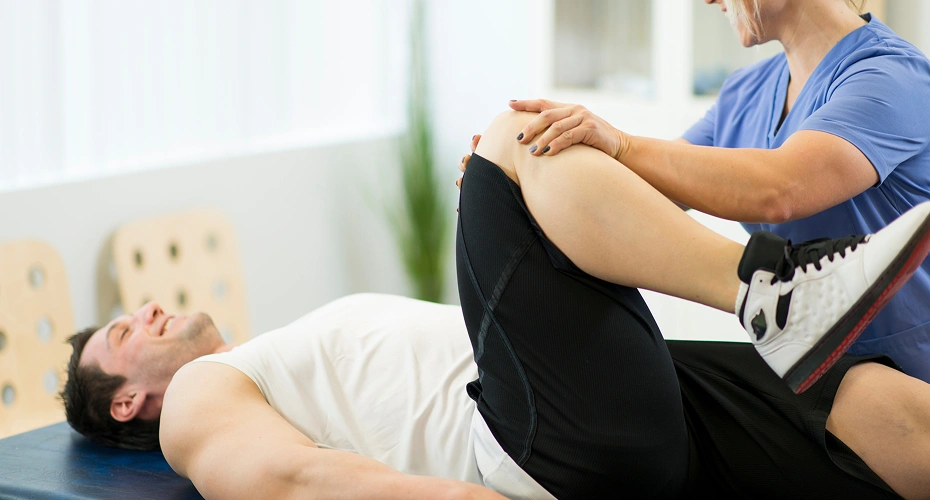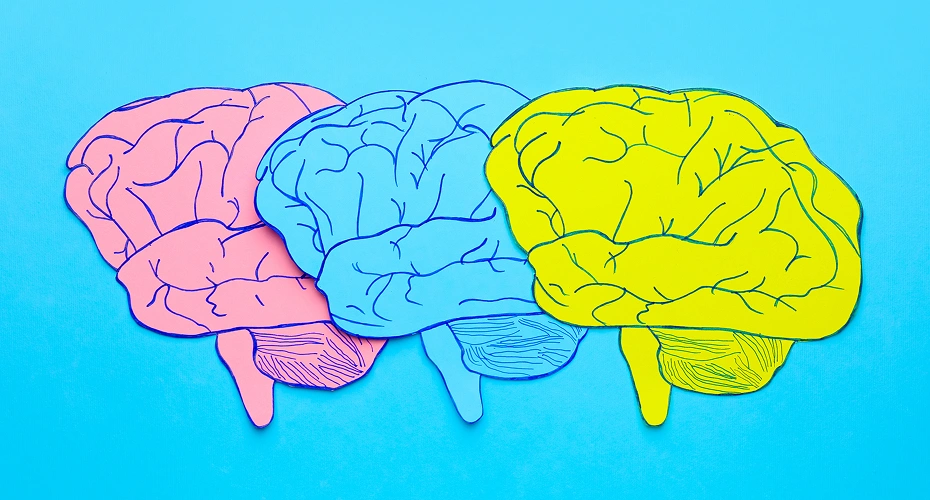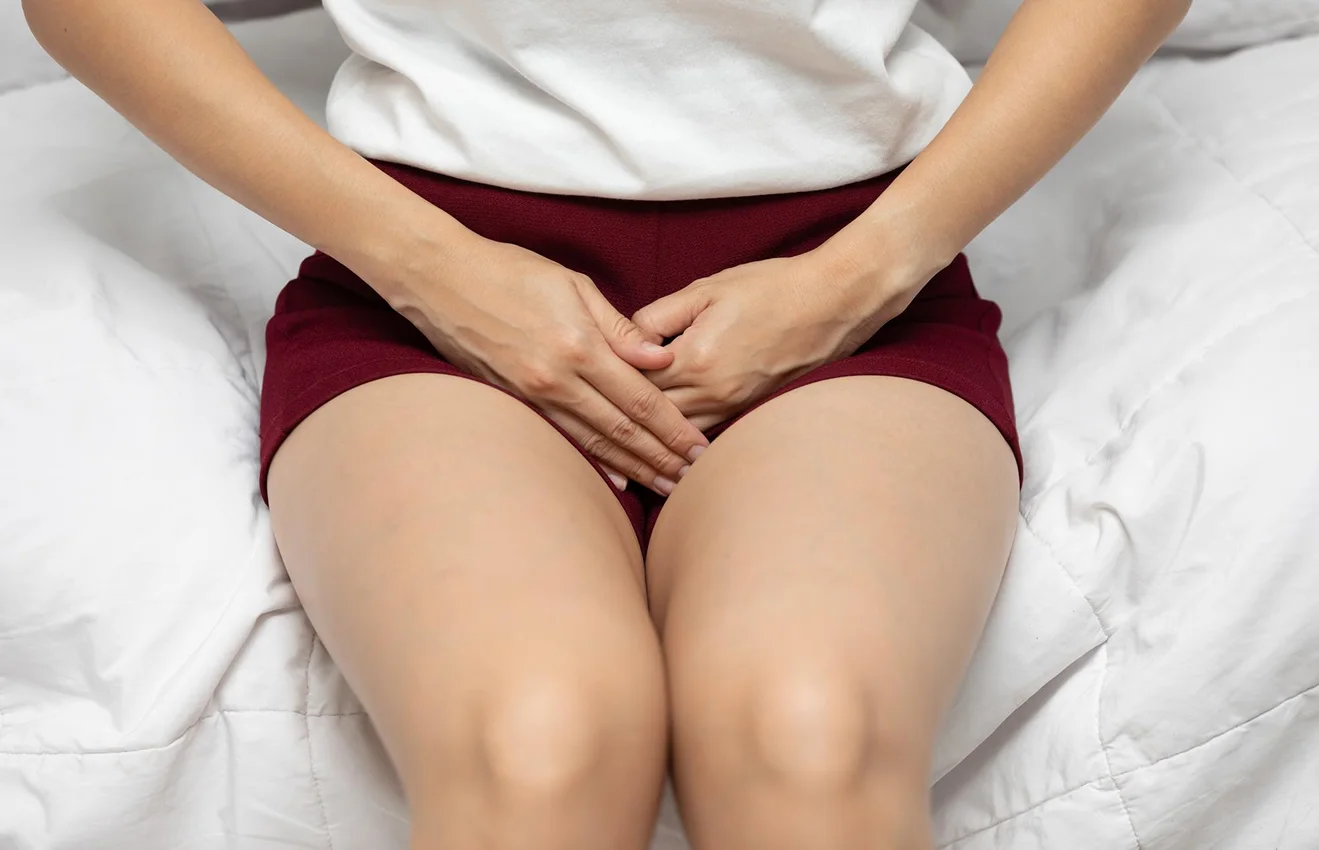I remember when I first started treating the pelvic floor population, one of the first patients I saw came in complaining of pain with sex, which was a barrier to starting a family with her partner.
I started with my standard pelvic floor physical therapy examination to determine what limitations may be contributing to why this patient was having pain. This patient mainly presented with muscle shortening of her pelvic floor and scar tissue from a past surgery, and this is what I first started to address during treatment.
During the course of the patient’s assessment, I learned that she has a stressful occupation, and along with giving her home exercises, I also advised that she find some time to relax. Now we all know, those are weighted words, because that’s easier said than done when hustling in a bustling city, so I didn’t put much weight on it.
A few sessions went by, and we were pleased to see slow, steady progress. Throughout the time I was seeing the patient, I re-assessed and progressed the physical therapy interventions every session to see if we could make further progress towards reaching her goals.
One day, the patient came into the session and shared that she had bought a foot spa massager to help with daily physical relaxation after a full day of mental stress at work, along with doing her PT exercises.
To my surprise, as I reassessed, the muscle shortening in the pelvic floor had decreased more significantly than it had in previous sessions. The patient also reported feeling decreased pain when a finger is inserted during pelvic floor assessment.
My experience with working with this patient early in my career stuck with me because of the impact I observed between the state of the mind and healing in the body. Following this experience, I made it an integral part of my practice to include mindfulness into my treatment approach as a pelvic physical therapist.
As I continue to treat more pelvic floor cases over time, I find that patients with a good support system and healthier mental state tend to have better prognosis and response to therapy. This brings us to our topic today: mind-body connection in pelvic health.
What Is Mind-Body Connection?
I’m sure we’ve all experienced this feeling: we had a bad week, people demanding things from us left and right, small nuisances piling up until we lose our cool. And once the weekend hits, we are so exhausted that all we want to do is lay in bed. That’s our mind-body connection at work.
Mind-body connection demonstrates that changes in one system can influence the other. A prime example would be our sympathetic (fight-or-flight), and the parasympathetic (rest-and-digest) nervous systems.
Imagine you are walking on a peaceful hike and all of sudden a bear jumps out in front of you. Your muscles tense up, you feel hot all over, your pupils dilate–preparing for your body to either run or fight–even before your brain registers what’s happening. That’s your sympathetic nervous system, aka fight or flight response, at work.
On the flip side, when you are relaxed, imagine rocking gently in a hammock with a gentle warm breeze blowing, the parasympathetic nervous system takes over, creating the opposite physical reactions. It slows down breathing rate, heart rate and blood pressure, stimulates digestion, and bladder contraction for urination.
A balance of both systems are key to survival. However, many people get stuck in one mode, spiraling into dysfunctional processes.
People living with anxiety, depression, and chronic stress are more susceptible to chronic pain. Pain neuroscience (PNE) outlines that pain is a perception that our brain creates from combining biological, social, and psychological signals. The level of pain we experience is not always an accurate reflection of the actual injury.
Chronic mental stress (being chronically in a sympathetic state) can also alter white blood cell function–a crucial part of our immune system. This diminishes response to viral infected cells (even cancer cells,) wound healing, and effectiveness of vaccinations.
All that said, we can confidently declare that “it’s not just in our heads!” Our body does respond to how we feel. It’s important to be mindful of our wellbeing both physically and mentally.

Emotions, Stress, Cognitive Patterns And Their Influence On Pelvic Floor Function
There is a strong correlation found between the severity of anxiety and depression symptoms, and the severity of pelvic floor dysfunction. While not every pelvic floor dysfunction is developed subsequent to trauma or compromised mental health, it is helpful to take note of existing factors as potential contributors.
Pelvic floor muscles are skeletal muscles. They function by lengthening and shortening. When muscles are too lengthened and weak, they are unable to provide stability or produce force. When they are too short and tensed up, they lack the flexibility to produce a strong force, but also cannot relax. Both are important for different functions.
To expel waste, deliver a child, or tolerate insertion, the muscles must relax and lengthen. To provide support for organs, hold in the waste, the muscles must be able to shorten.
The pelvic stress reflex response is a subconscious shortening of the pelvic floor when the person is stressed. This can lead to conditions such as fecal/ urinary incontinence, constipation, pain with penetration, abdominal pain. These conditions can greatly impact a person’s routine, interpersonal relationships, and quality of life.

Physiologically, How Is The Nervous System Related To Pelvic Floor?
Now that we got some facts out of the way, let’s dive into the more nitty gritty details, breaking down the physiological processes of different common pelvic conditions.
Pelvic Pain
Neuromuscular: Stress can lead to chronic muscle tension throughout your body, including your pelvic floor muscles. The levator ani muscle, which spans broadly in your pelvic floor, when chronically in spasmed state, can result in painful, episodic conditions like levator ani syndrome.
Cardiovascular: Living in a high state of stress can lead to chronically elevated blood pressure and heart rate changes. Research finds that men with this presentation are more prone to having chronic pelvic pain syndrome.
Hormonal: Chronic stress keeps your body releasing high levels of cortisol — a hormone that helps regulate sleep, immunity, and inflammation. Over time, this can deplete your body’s resources to keep making cortisol, which weakens the immune system, slows healing, lowers your tolerance for everyday stress, disrupts sleep, and can increase pain levels.
Cognitive: Psychological stress can worsen physical pain due to negative thought patterns. A recent study found that women with chronic urogenital pain who participated in an interview exploring the links between their symptoms and life stress experienced better treatment outcomes than those who did not. Researchers believe this worked because:
1. It reframed the pain as not just stemming from tissue damage, but also from brain-based cognitive and emotional processes.
2. It created space to talk openly about life stressors, which can improve physical symptoms, immune function, and overall healthcare engagement.
3. Sharing of vulnerabilities helps patients acknowledge their struggles, reach clarity, and make healthier changes in life.

Bowel Movement and Urination
Common expressions used on the daily such as “I’m gonna pee my pants” or “I’m gonna poop my pants” are hyperboles used to express strong emotions. Unironically, the mechanisms of defecation and micturition, aka, peeing and pooping, are closely related to our nervous system.
Psychological distress is highly correlated with Irritable Bowel Syndrome (IBS), a functional disorder where no structural gut changes explain the symptoms. IBS can lead to pelvic floor dysfunction by causing muscle guarding, straining, or habits like prolonged holding.
Just-in-case peeing (JIC-ing) is an anxiety-driven habit of using the bathroom preemptively to avoid being caught without access. Over time, it can make the bladder overly sensitive, triggering the urge to go even when it isn’t full.
Sexual Function
Sexual intercourse is a complex process as it involves physiological, psychological, social and emotional factors.
Arousal: Reaching genital arousal is a dynamic process that requires relaxation. Getting an erection, or swelling of the clitoris involves neurotransmitter releases that promote the widening of your blood vessels to increase blood flow, which is a parasympathetic activity.
Secretion: Relaxation is required for secretion of fluids that lubricate the penis and vagina. They are promoted by parasympathetic nerves.
Orgasm: Orgasm is the release of built-up neuromuscular tension and pelvic congestion. It requires coordination between the parasympathetic system (which helps produce fluids) and the sympathetic system (which triggers rhythmic contractions and ends arousal).
As you can see, sexual function relies on a healthy balance between the parasympathetic and sympathetic systems. Disruption of this balance can lead to conditions like persistent genital arousal disorder (PGAD), often linked to anxiety, or hypoactive sexual desire disorder (HSDD), associated with reduced activity in parts of the brain that manage emotion and behavior.

Can The Brain Rewire Itself?
You might wonder—if my nervous system is dysregulated, is it permanent? The answer is no!
Neuroplasticity is the nervous system’s ability to change and adapt — rebuilding or strengthening its connections after injury or from repeated practice. When the pathways between your brain and body get disrupted (for example, from injury or disuse), you can help restore them by practicing movements (internal stimulus) or through feedback and guidance (external stimulus). Repetition helps re-establish the mind-muscle connection, while feedback helps refine it.
Just as you can rewire the mind muscle connection, you can also rewire your brain’s thinking patterns. Cognitive behavioral therapy (CBT), a form of psychotherapy, is a technique that teaches us to reframe negative emotional connotations to events. Utilizing this technique can help us regulate our emotions in response to certain events, such as our experience in pain.

What Is Our role As Pelvic Floor Physical Therapists?
As physical therapists, aka movement specialists, we evaluate all the contributors to the way you move–balance, coordination, muscle length, strength– to help carry out your daily tasks, and participate in activities that you love!
With our guidance and feedback, we can help you understand your condition, encourage you to do exercises that can address your dysfunctions, and provide feedback for improvement. We can help take away the fear that you have by slowly easing you into the exercises.
Clinical guidelines for physical rehabilitation are saying that when coping with physical pain, purely addressing physical impairments to reduce disability is not productive. Pelvic floor therapy is not just musculoskeletal work–it’s also emotional work. Hence, incorporating meditation mindfulness would be great supplements to physical treatment.
Here are some exercises that incorporate mindfulness:
Breathwork
Diaphragmatic breathing is a commonly used technique to help us tap into our parasympathetic nervous system. Some breathing techniques you can try to incorporate into daily routines:
- Triangle Breath: Inhale through your nose and feel your lungs filling with air for a count of 3-5 seconds. Hold for 3-5 seconds. Then exhale through your mouth slowly for a count of 3-5 seconds. Repeat for several rounds .
- Lion’s breath: Find a comfortable sitting position, breathing deeply through your nose. As you exhale, open your mouth wide, stick out your tongue as far as you can, and make a “haaaa” sound. Direct your gaze upward, either towards the ceiling or the spot between your eyebrows. Repeat for several rounds.
Self Regulating Touch Points
Somatic regulation techniques, or self regulating touch points, are techniques you can use to promote self soothing, and calm the nervous system.
- Ear circles: Gently rub the top of your ear, the front of the ear lobe, and the cartilage above your ear canal in circles for several minutes, applying gentle pressure.
- Neck sweeps: Apply light pressure, gently sweep up the sides of your neck for several minutes.
- Self hug: Give yourself a big, big hug!

Movement
As Elle Woods has famously said, “Exercise gives you endorphins. Endorphins make you happy.”
Movement improves physical health, cognitive function, and emotional health. It releases dopamine and endorphins–happy hormones. It also gives us mobility, strength, and balance, prolonging our ability to remain independent and have a good quality of life. Mindfulness movements such as pilates, yoga, and tai chi improve body awareness and help regulate your nervous system. More intense athletic activities can allow for release of stronger emotions.
Creative Expression/ Emotional Release
Participating in creative expression such as art, poetry, dancing, or music can help with emotional release, cognitive functions, and social connections.
Interestingly, a study on pelvic floor status in opera singers measured by transperineal ultrasound found that classically trained singers had good voluntary pelvic floor muscle contraction. Music listening and singing have been shown to decrease agitation, improved posture, movement, and well-being of people with dementia.
So not only can you benefit emotionally, but physically as well!

In Conclusion…
Often overlooked, our pelvic floors take on so much functionally and emotionally. It helps us get rid of waste, but it also is an area where pleasure, vulnerability, and bonding happens. It is important to give it just as much TLC as the rest of our body.
Now that you have the knowledge of how pelvic health is not an isolated system, hopefully it gives you a little push to think of new self care habits that can help improve your pelvic floor function. Just like my patient who came in experiencing pain with sex, for those of you also experiencing pelvic floor dysfunction, I encourage you to find your own version of a foot massager!
References:
- Alkatout, I., Wedel, T., Pape, J., Possover, M., & Dhanawat, J. (2021). Review: Pelvic nerves – from anatomy and physiology to clinical applications. Translational Neuroscience, 12(1), 362–378.
https://doi.org/10.1515/tnsci-2020-0184 - Badaghi, N., Buskbjerg, C., Kwakkenbos, L., Bosman, S., Zachariae, R., & Speckens, A. (2024). Positive health outcomes of mindfulness-based interventions for cancer patients and survivors: A systematic review and meta-analysis. Clinical Psychology Review, 114, 102505.
https://doi.org/10.1016/j.cpr.2024.102505 - Bianchi, F. (2017). Neurophysiology of the pelvic floor in clinical practice: A systematic literature review. Functional Neurology, 32(4), 173.
https://doi.org/10.11138/fneur/2017.32.4.173 - Carrubba, A. R., Lothman, K. A., Ball, C. S., Mongan, A. L., Perlman, A. I., & Chen, A. (2024). The impact of mind-body medicine on patient-reported outcomes in the management of chronic pelvic pain. Cureus.
https://doi.org/10.7759/cureus.62376 - Carty, J. N., Ziadni, M. S., Holmes, H. J., Tomakowsky, J., Peters, K., Schubiner, H., & Lumley, M. A. (2018). The effects of a life stress emotional awareness and expression interview for women with chronic urogenital pain: A randomized controlled trial. Pain Medicine, 20(7), 1321–1329.
https://doi.org/10.1093/pm/pny182 - Curillo-Aguirre, C. A., & Gea-Izquierdo, E. (2023). Effectiveness of pelvic floor muscle training on quality of life in women with urinary incontinence: A systematic review and meta-analysis. Medicina, 59(6), 1004.
https://doi.org/10.3390/medicina59061004 - Dingle, G. A., Sharman, L. S., Bauer, Z., Beckman, E., Broughton, M., Bunzli, E., Davidson, R., Draper, G., Fairley, S., Farrell, C., Flynn, L. M., Gomersall, S., Hong, M., Larwood, J., Lee, C., Lee, J., Nitschinsk, L., Peluso, N., Reedman, S. E., … Wright, O. R. (2021). How do music activities affect health and well-being? A scoping review of studies examining Psychosocial Mechanisms. Frontiers in Psychology, 12.
https://doi.org/10.3389/fpsyg.2021.713818 - Dossett, M. L., Fricchione, G. L., & Benson, H. (2020). A New Era for mind–body medicine. New England Journal of Medicine, 382(15), 1390–1391.
https://doi.org/10.1056/nejmp1917461
- Emerich Gordon, K., & Reed, O. (2020). The role of the pelvic floor in respiration: A multidisciplinary literature review. Journal of Voice, 34(2), 243–249.
https://doi.org/10.1016/j.jvoice.2018.09.024 - Khan ZA;Whittal C;Mansol S;Osborne LA;Reed P;Emery S; (n.d.). Effect of depression and anxiety on the success of pelvic floor muscle training for pelvic floor dysfunction. Journal of obstetrics and gynaecology : the journal of the Institute of Obstetrics and Gynaecology.
https://pubmed.ncbi.nlm.nih.gov/24127961/ - Littrell, J. (2008). The mind-body connection. Social Work in Health Care, 46(4), 17–37.
https://doi.org/10.1300/j010v46n04_02 - Marano, G., Traversi, G., Pola, R., Gasbarrini, A., Gaetani, E., & Mazza, M. (2025). Irritable bowel syndrome: A hallmark of psychological distress in women? Life, 15(2), 277.
https://doi.org/10.3390/life15020277 - Origoni, M., Leone Roberti Maggiore, U., Salvatore, S., & Candiani, M. (2014). Neurobiological mechanisms of pelvic pain. BioMed Research International, 2014, 1–9.
https://doi.org/10.1155/2014/903848 - Qin, H.-Y., Cheng, C.-W., Tang, X.-D., & Bian, Z.-X. (2014, October 21). Impact of psychological stress on irritable bowel syndrome. World journal of gastroenterology.
https://pmc.ncbi.nlm.nih.gov/articles/PMC4202343/ - Volløyhaug, I., Semmingsen, T., Laukkanen, A.-M., Karoliussen, C., & Bjørkøy, K. (2024). Pelvic floor status in opera singers. A pilot study using transperineal ultrasound. BMC Women’s Health, 24(1).
https://doi.org/10.1186/s12905-024-02895-6 - Yilmaz, U., Liu, Y.-W., Berger, R. E., & Yang, C. C. (2007). Autonomic nervous system changes in men with chronic pelvic pain syndrome. Journal of Urology, 177(6), 2170– 2174.
https://doi.org/10.1016/j.juro.2007.01.144



